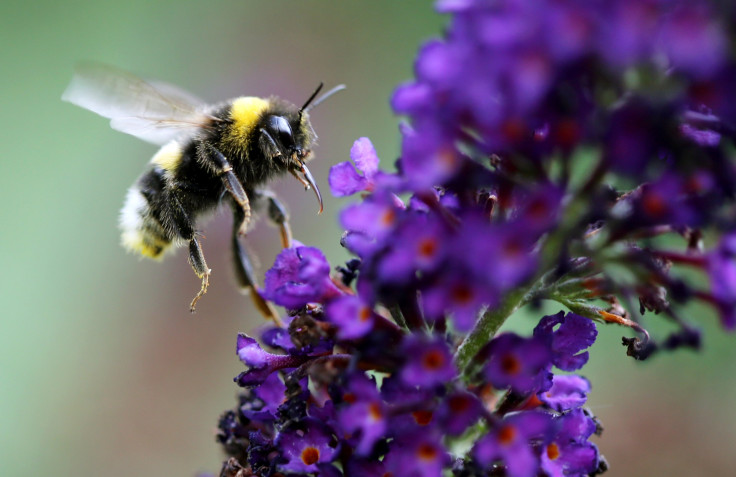Bumblebees Are Intelligent Learners: New String-Pulling Study Shows Fast Learning, Cultural Transmission In Insects

Research has found that bumblebees are capable of learning how to pull strings in exchange of a reward — specifically food — and also pass on the ability to do so to other bees. This reportedly marks the first instance where this experiment to test intelligence has proved successful with an insect.
The study, by researchers from the Queen Mary University of London, was published Tuesday in the journal PLOS Biology and showed that certain “innovator bees” were able to pull a string to reach sugar water by themselves and in turn, train their “naïve” counterparts to do the same.
“We found that when the appropriate social and ecological conditions are present, culture can be mediated by the use of a combination of simple forms of learning,” lead author Sylvain Alem said in a press release. “Thus, cultural transmission does not require the high cognitive sophistication specific to humans, nor is it a distinctive feature of humans.”
For the research, scientists were able to train 23 out of 40 bees, step-by-step, to pull the strings attached to three artificial blue flowers. However, in the control group — that had no training at all — only two of the 110 bees were able to perform the task.
The “naïve” group was then allowed to observe, from a distance, the trained bees while they were pulling the strings. It was seen that almost 60 percent of them were able to learn the skill successfully through observation. In the final step of the experiment, researchers let the trained bees back into their colonies and found that the technique was successfully spread to a majority of the worker bees there.
“We are ultimately interested in finding out what might be possible neural solutions to underpin such refined skills in bees,” said project supervisor Lars Chittka. “How can they do it with such small brains, and how can their miniature nervous systems manage such a diversity of behaviors and cognitive tasks?”
Chittka added: “We are exploring this through modelling information processing in parts of the insect brain, and we find that often, exceedingly difficult tasks, for example in visual pattern recognition or floral scent learning, can be solved with extremely simple neural circuits. We are still a long way from understanding the required neural circuitry for string-pulling, however.”
© Copyright IBTimes 2025. All rights reserved.





















